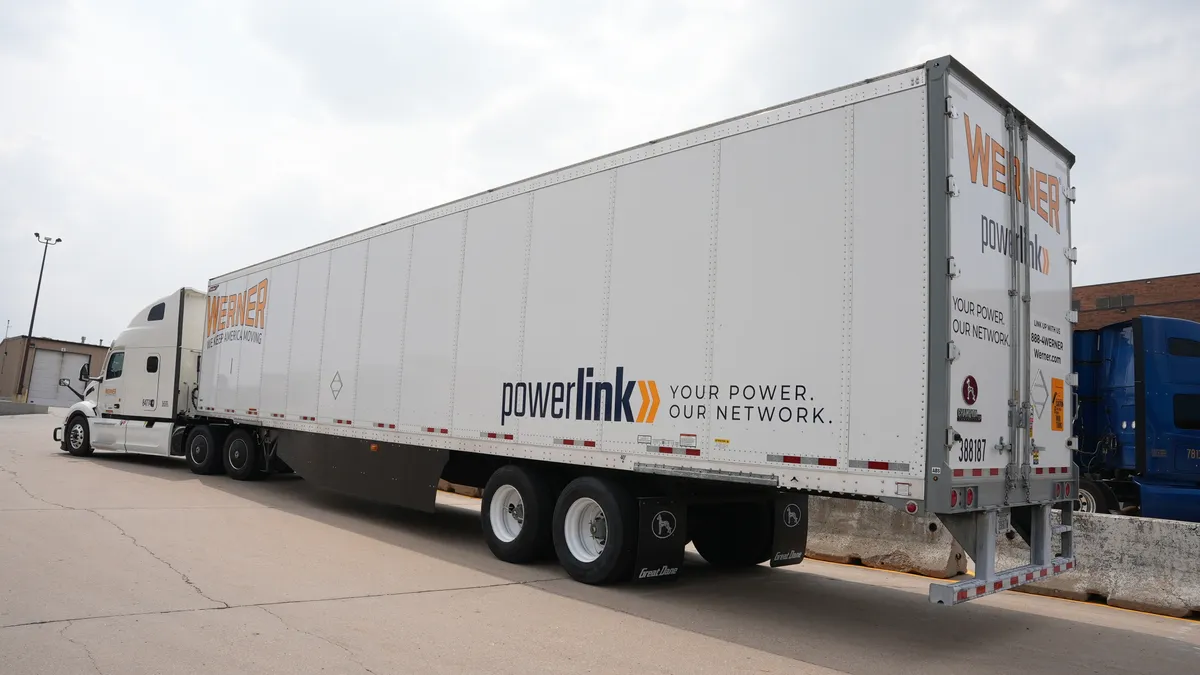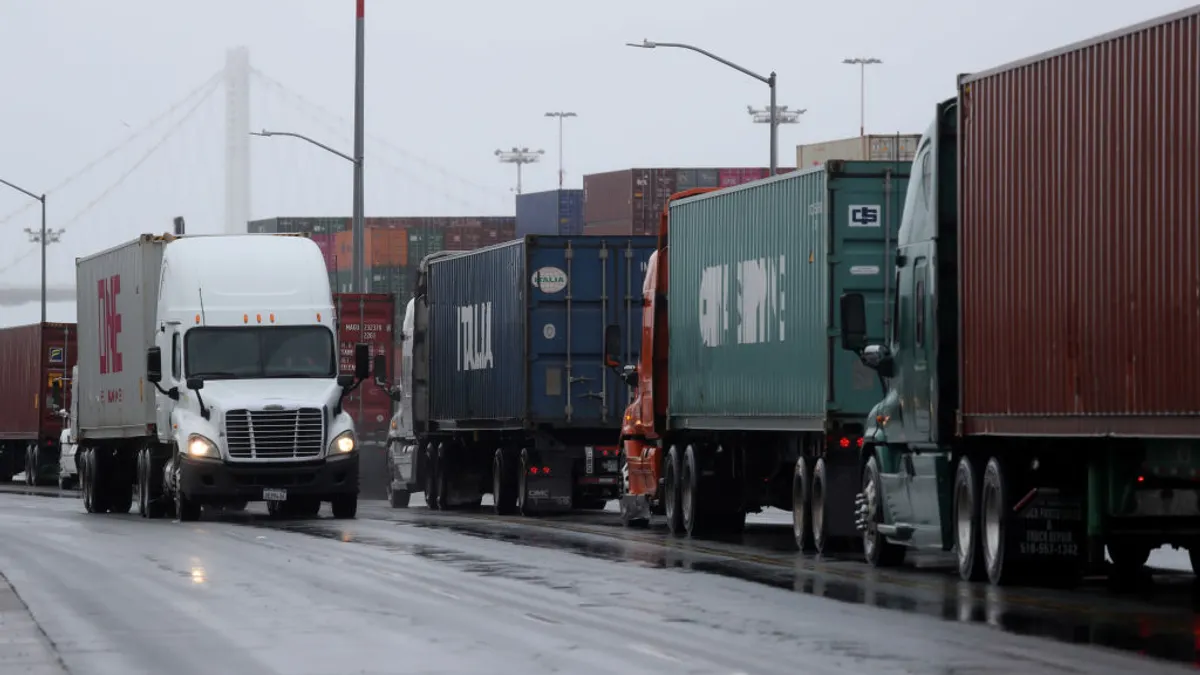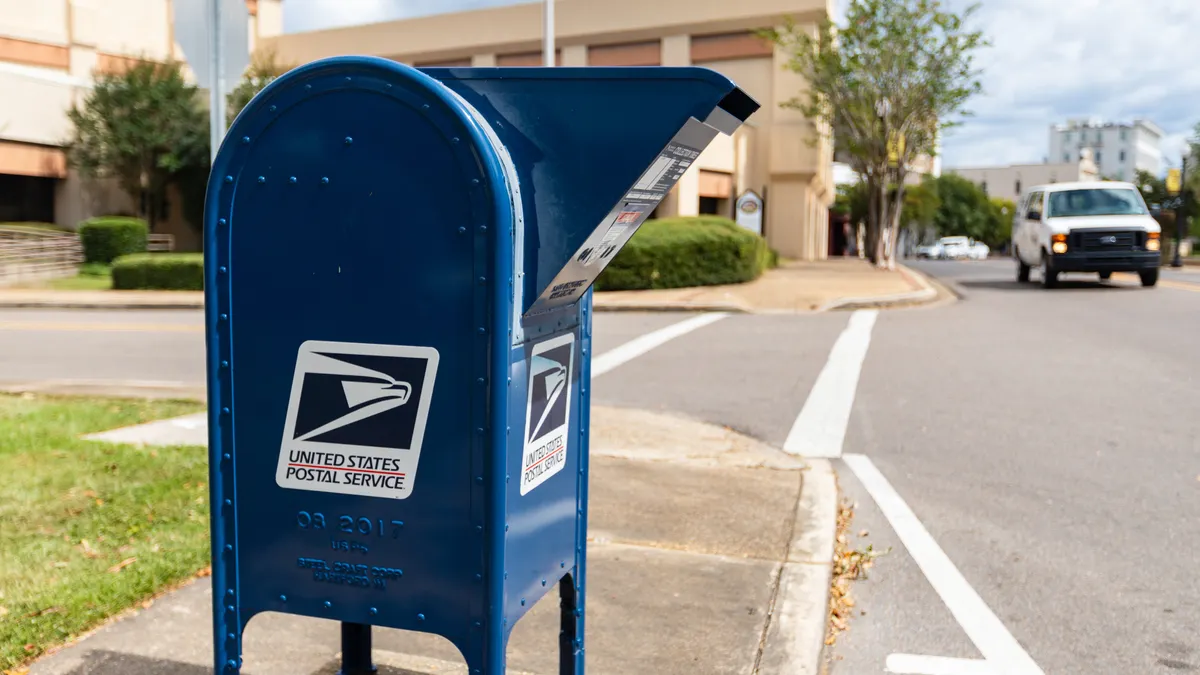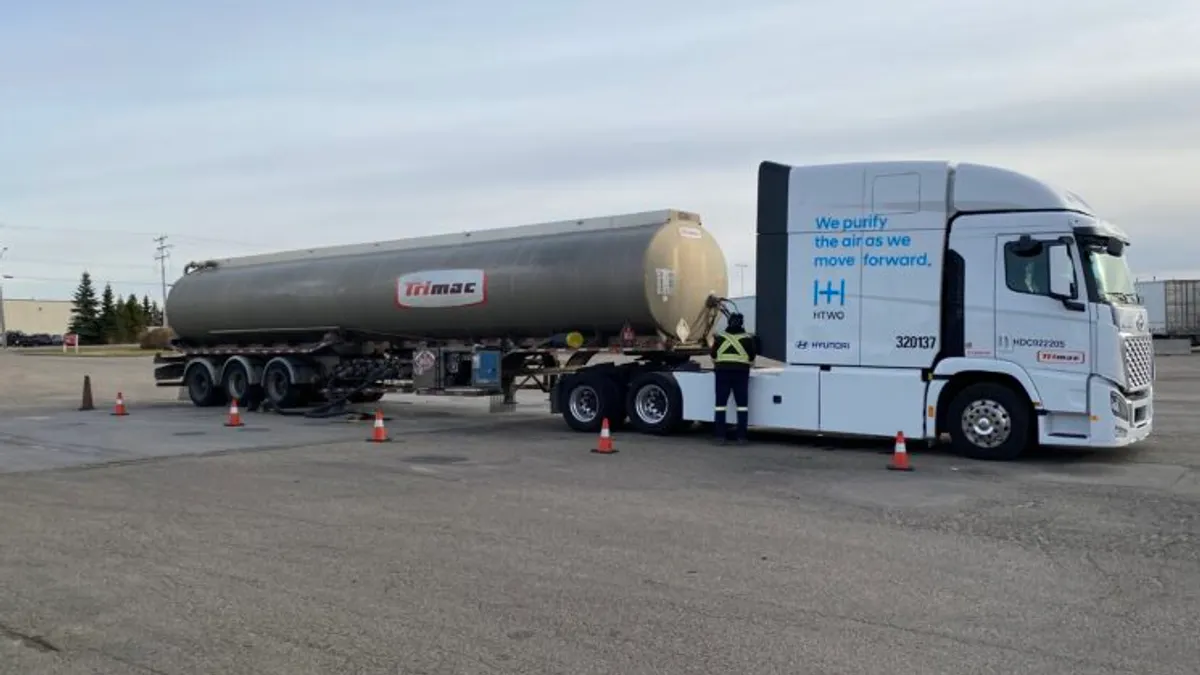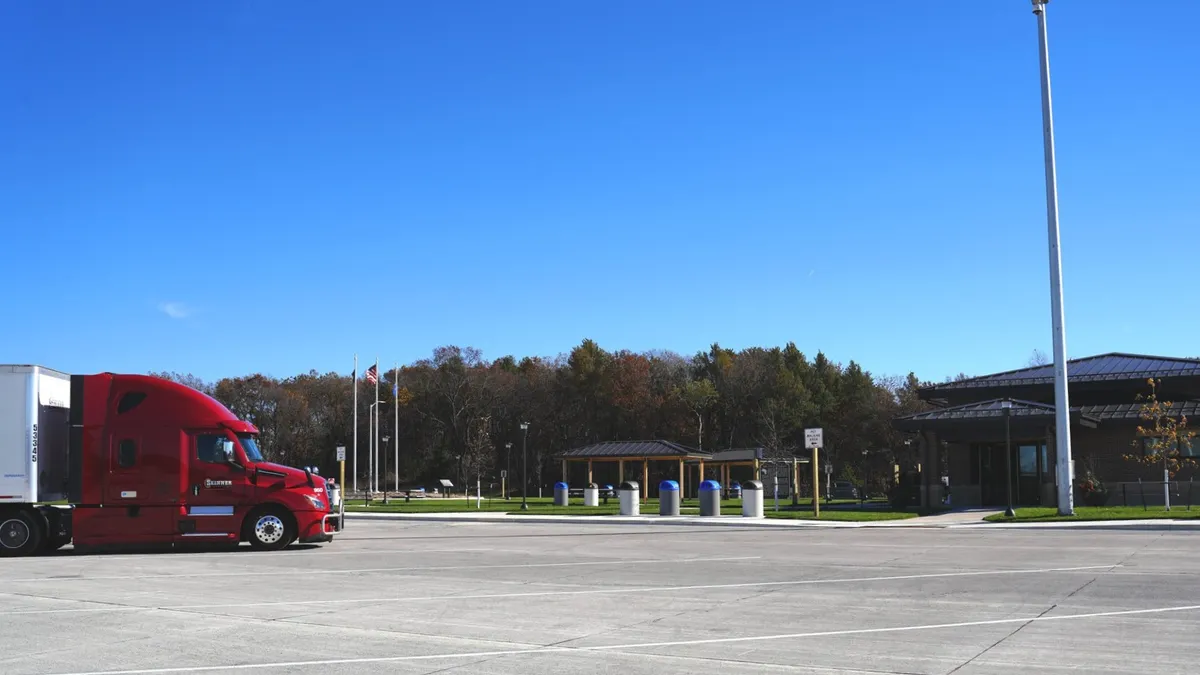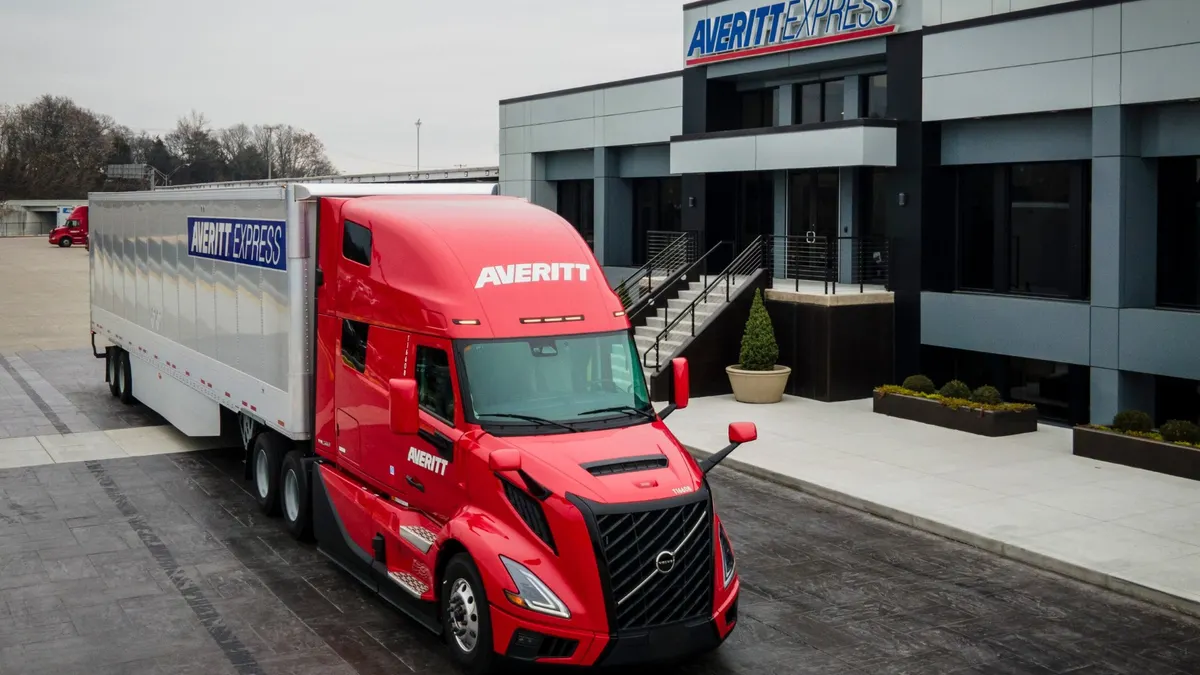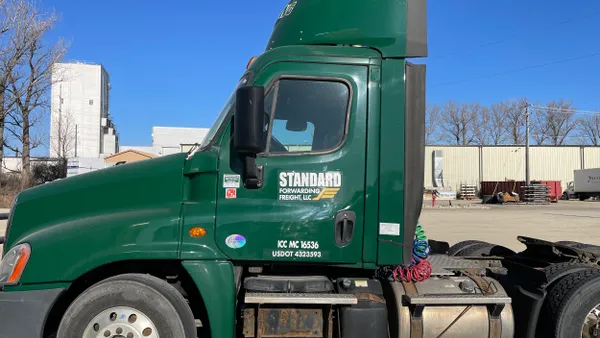Shipper and carrier needs ebb and flow with the cycles of the market, but one particular service remains in high demand: drop and hook.
The practice involves a carrier dropping off one trailer at a dock and attaching another pre-loaded one, rather than live loading. The programs are popular among carriers, drivers, brokers and shippers due to efficiency and reduced dwell time.
“It's a service that shippers need and carriers want,” said Adam McDonough, VP of truckload, North American Surface Transportation at C.H. Robinson Worldwide.
In today’s soft freight environment, fleets and freight brokers can use drop-and-hook programs to combat low volume and secure long-term agreements with shippers. J.B. Hunt Transport Services saw that bear out in Q4. Volume fell 7% year-over-year in its truckload segment. But volume rose within its 360box drop-and-hook program.
“Having a trailer pool makes it stickier,” said Chris Caplice, chief scientist at DAT Freight & Analytics. Instead of volume changing with each bid, shippers and carriers doing drop and hook must commit to a certain amount of business with each other, he explained.
“That's exactly the key thing that carriers want: consistency,” Caplice said.
Trailers and more trailers
The truckload market has been inverted since Q2 2022. According to DAT data, dry van spot rates are around $2.14, which is 36 cents less than contract rates. But drop and hook was popular with shippers and carriers long before the market flipped.
With the implementation of the ELD mandate in 2017, carriers had to more carefully plan driver shifts and hours, McDonough said. Drop trailers were one way to add more predictability and save time for carriers and their drivers.
Shipper interest escalated during the pandemic, said David Spencer, VP of market intelligence at Arrive Logistics. A big reason was labor; drop trailers let shippers load products when workers were available. Having an available trailer reduced detention charges and the potential for products damage during loading or unloading.
Many pandemic-era issues, such as bloated inventories and trailer shortages, have now abated, but shippers continue to see the value of drop and hook. Carriers and brokers have responded in step by establishing or growing drop-and-hook programs.
Landstar System’s drop-and-hook fleet has more than 15,500 trailers. J.B. Hunt’s 360box expanded to 16,000 trailers by the end of last year. Just over a year ago, Ryder System launched a drop-and-hook service. At the time, the platform had more than 6,000 trailers in the U.S., “with inventory growing daily,” the company said.
Werner Enterprises’ drop-and-hook network includes a pool of 30,000 trailers, and “that's up significantly in the last five years,” said Andy Damkroger, VP of logistics at Werner. The firm’s shippers, many of whom are in the retail or consumer packaged goods industries, have a “strong preference” for drop and hook, he added.
“It’s a competitive advantage for us to have such a large trailer network,” Damkroger said.
As fleets and brokers grow their drop trailer programs, they’re seeing the benefits. About 80% of Werner’s one-way truckload business is drop and hook.
C.H. Robinson is executing about 2,700 drop trailer shipments daily, and it has more than tripled its drop trailer volumes and revenues over the last six years, according to McDonough.
“It’s a significant portion of our business,” McDonough said.
A market switch
Shippers recognize that the low rates of today won’t last forever. Market analysts expect a market correction in the near term. Caplice said sometime this year, DAT expects spot rates to flip back to being more expensive than contract.
Housing starts, higher vehicle sales and more consumer demand could influence the logistics market. Arrive Logistics expects the Federal Reserve to cut interest rates this year, which “would likely trigger increased housing activity and thus increase overall freight demand,” it stated in a recent market update.
As a result, shippers that shortened contract terms are now looking to extend them to hedge against potential rate hikes, Spencer said. And carriers that offer drop and hook could be in a position to secure shippers’ business for the long term.
“It's much easier for a shipper to be stickier with the carrier through market disruptions when they have large trailer pools and large contract agreements in place,” Spencer said.
Experts said demand for drop and hook isn’t necessarily expected to increase dramatically, but it will likely remain steady as shippers favor the practice.
As Caplice put it, “If they can use drop and hook, they will use drop and hook.”


